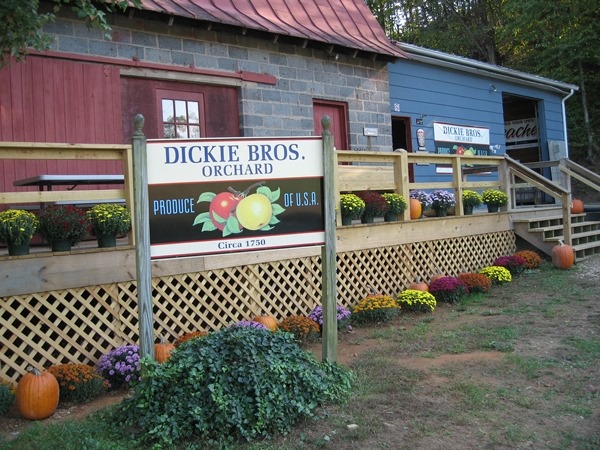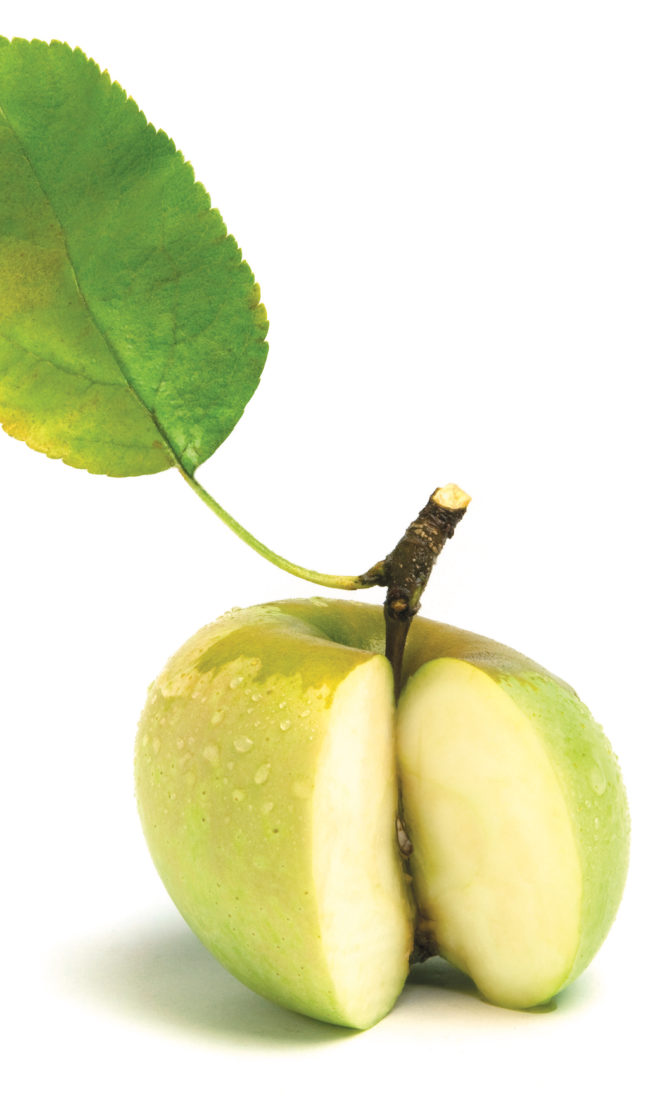As I drive forty-five minutes on increasingly winding, narrow roads into rural Nelson County, Virginia, I’m anticipating my arrival at Dickie Brothers Orchard even more than usual. It’s a glorious, blue-sky November day, and I know that the family-run spread on the eastern edge of the Blue Ridge Mountains will be as beautiful as ever. But I’m a man on a mission. I must procure a specific apple, the Albemarle Pippin. Lots of them, preferably. My fear is that I’ve procrastinated too late into fall and my fellow Pippin-stalkers will have beaten me to the crunch.

Like many heirloom apples, the Albemarle Pippin has quite a history. It begins about three centuries ago with a random hybrid seedling, or “pip,” that sprouted a new variety in the village of Newtown, New York. Dubbed the Newtown Pippin, it became favored for eating and for fermenting into the colonial-era tipple of choice, cider.
It wasn’t until its cultivation in the iron-rich soil of Central Virginia, namely Albemarle County, that the variety attained its peak expression. Tart and snappingly crisp when picked in October, it continues ripening off the tree with an emerging sweetness that balances acidity. As that alchemy occurs, aficionados detect a surprising note of pineapple. How tasty is it? In 1838, the American ambassador to Great Britain presented a young Queen Victoria with two bushels of Albemarle Pippins. Smitten, she immediately suspended their import tax. It’s good to be queen.
Unfortunately, the tree is as difficult to cultivate as its fruit is delicious, making it a challenging commercial crop. And by the beauty-pageant standards of today’s supermarket apples, the Pippin’s squat profile and russeted countenance isn’t taking home any tiaras. So it never attained the success of the less complex Red Delicious or Granny Smith. That doesn’t stop a handful of Central Virginia orchards from still producing our local hero on a small scale. Out of the twenty thousand bushels of apples grown by Dickie Brothers Orchard annually, Pippins account for only one hundred to two hundred bushels. Whatever amount is harvested is nabbed by the area’s cider makers and heirloom devotees like me.
Situated one county south of Albemarle, Dickie Brothers has been farmed by the same family for seven generations, since about the same time the Pippin arrived. As expected, I find the fall sun shining on seven hundred acres of orchards and pasture rolling into the dramatic rise of Little De Priest Mountain. I barely notice, hustling into the rustic market in a former packing shed.
I peruse bins of Staymans, Winesaps, and Black Twigs, but my quarry is nowhere in sight. “We sold all out of Pippins, I think,” the woman behind the counter informs me with a smile, unaware that she might as well be plunging an apple corer into my chest. “Except for a few boxes of seconds we still have in back, if maybe you want those.”
I do indeed! I’ve purchased these supposedly lower-grade apples here before and found them totally up to snuff, even for eating out of hand. Crisis averted, I secure a bushel-sized box in my trunk, minus one big apple that I munch to the core while finally pausing to admire the view. A bushel is a lot of apples, and I will pass some on to friends and neighbors. But not too many.








